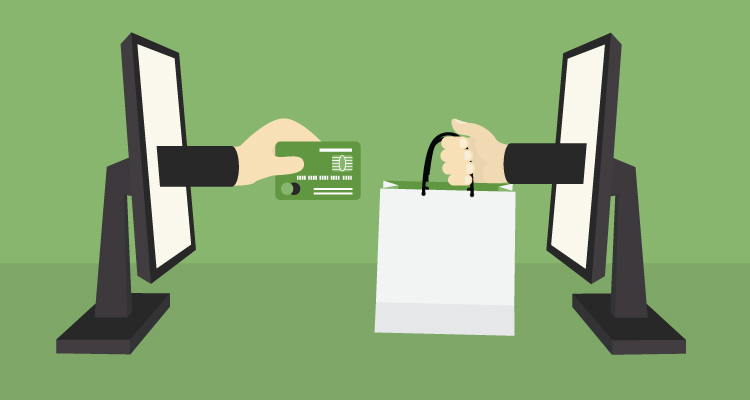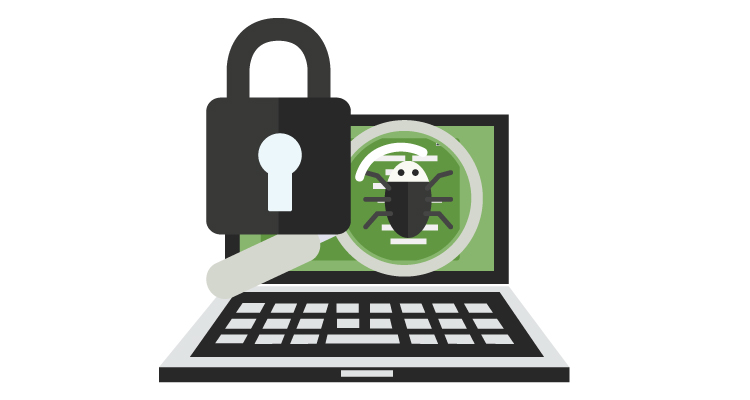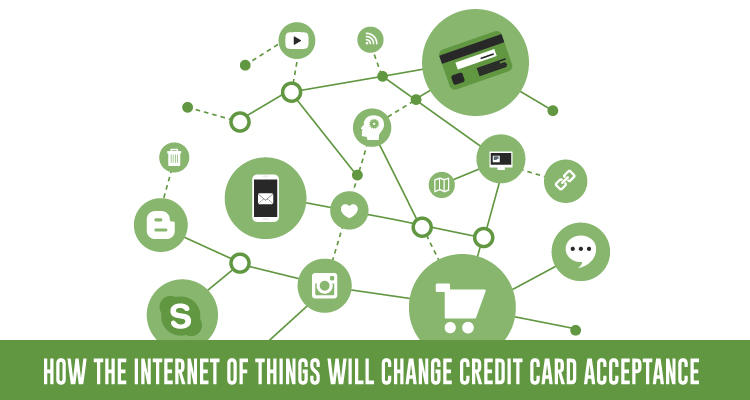When you think about the Internet of Things, you probably conjure up a futuristic world where you do many things. You preheat the oven when you leave work, be notified when you’re out of eggs; or maybe even have virtual credit cards.
The reality is that we’re already living in this world thanks to Wi-Fi hubs, smart televisions, and digital video recorders.
While the IoT is already disrupting numerous industries, it’s also going to change how credit card acceptance.

Table of Contents
Toggle‘Invisible Payments’ and a Smooth Customer Experience with Credit Cards
“Providing the consumer with a truly frictionless experience is the holy grail for the payments industry. This has already been achieved in-app with platforms such as Uber, but has yet to be translated in-store,” writes Andre Stoorvogel for Mobile Payments Today.
“In the IoT era, however, we are moving ever closer to delivering a seamless in-store experience. Beacons, geolocation, computer vision and biometric technologies are being combined to deliver a frictionless experience.”
Stoorvogel also notes that “the industry will closely be monitoring the success of Amazon Go,” which is expected to launch sometime in early 2017. “The concept deploys various technologies (the exact details are yet to be released) that enable a consumer to walk into the store, pick up an item and walk out, with the order charged to their Amazon account upon leaving.”
Other Companies
Besides Amazon Go, other companies are expanding into the IoT market. For instance, Visa has teamed up with Honda and PakWhiz that allow for car-based concept apps that can be accessed through the car’s dashboard. These apps, which use beacon technology, will be capable of many things. They’ll notify drivers when fuel is low, locate the station with the best price; and even purchase the fuel using the car’s console -which has a card linked to it. It can also pay for parking using the same technology.
Capital One is allowing customers to pay their bills via Amazon’s Alexa. And, you can already instruct Alexa to order anything from a new pair of shoes to a pizza for dinner.
“In a limited number of US stores, Google has introduced the ‘I’ll pay with Google’ system, where shoppers just have to walk up to the cash register and simply say the phrase,” said Liviu Arsene, senior e-threat analyst for antivirus software company Bitdefender. “The hands-free system works by simply uploading a picture of the user and a payment method into a designated application and then it connects via Bluetooth and Wi-Fi to the store’s cash register to validate the transaction.”
And, there’s also Samsung’s smart appliances that can monitor the items in your fridge. These would order the groceries that you need automatically. However, smart appliances have had issues. For example if the fridge knew you were out of milk, it didn’t know how to order a new gallon. Visa has been working on this so that these complex relationships can work together.

Convenient, But How Secure is the IoT?
The biggest drawback involving IoT has been security. And, there’s good reason. A number of data breaches over the last several years has compromised millions of customers and have cost businesses millions of dollars as well. And, some security experts, such as Forrester, is predicting a large-scale IoT security breach sometime in 2017.
At the same time, Javvad Malik, security advocate at AlienVault; Jason Collins, says that in 2017, “the IoT device security debate will escalate, putting pressure on manufacturers to architect fundamental security principles into the designs of internet-connected products. We may even see governments around the world take an active role in IoT safety legislation.”
While security is a concern, there are already built-in security measures. Every transaction uses tokenization, since the IOT uses NFC and beacon technology. Additionally, biometrics are becoming more commonplace. In fact, if you have an iPhone; you’re already familiar with Touch ID that uses your fingerprint to authorize a transaction. With more data points in place to verify your identity, the more protected you are.
Another solution to these security concerns will be the blockchain.
“The blockchain could be the answer to an already-emerging question of how to keep devices secure and stable in an overcrowded tech environment,” writes Peter Daisyme in a previous Due article. “With the blockchain acting as an intermediary, the IoT will be able to operate more efficiently as devices communicate with each other.”
“Since the blockchain is tamper-proof, customers will see a reduced risk of their personal data being leaked via a security breach,” continues Daisyme. “If IoT device manufacturers aren’t currently utilizing the blockchain, over time they’ll see the benefits and put this technology in place.”
The Possibilities Are Endless With Credit Cards
What’s appealing about the Internet of Things are the endless applications that are possible. These applications will offer solutions that will provide greater security and mobility with credit cards.
With IoT, credit card companies will collect more data, analyze it well, and automatically take action at the right moment. It’s a win-win for both customers, retailers, and credit card companies.
















